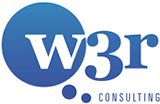3 Hiring Strategies that Bring You Top Healthcare IT Consultants

How do you do more with less in the healthcare industry? These days, providers and payors depend upon high caliber tech professionals to find innovative ways to reduce costs and increase ROI. Under proper guidance, most organizations can turn what were once simply functional IT systems into strategic value centers. Locating, hiring and retaining top talent for these roles can be a difficult process. Here is how to find the right healthcare IT consultants to help rein in costs and improve patient and member outcomes.
Identify Your Opportunities
Like the Big Bang, IT solutions have exploded from a simple cluster of tools to a vast array of capabilities in a relatively short timeframe. Electronic health records, cloud platforms, enterprise data warehousing, artificial intelligence tools, and other solutions are all vying for the IT budgets available to healthcare organizations. Even CTOs, CIOs, and now CDOs (Chief Data Officers) with years of industry experience now find themselves in need of specialists’ niche perspectives to diagnose unique challenges and prescribe cost-effective solutions. How do you narrow down the best result for your budget? A few strategies come to mind:
Market mapping – As with any industry, getting a full lay of the land is essential. Often, conducting market mapping of your competitors from an org chart and workforce standpoint can help pinpoint the gaps that healthcare IT consultants or full-time employees can cover. It can even help to identify which technical solutions can be resolved with full-time staff and which would benefit from IT consultants (a debate which we will discuss in more detail shortly).
Tracking innovations – It helps to keep track of the cutting-edge – even if your organization is not ready for full adoption. When you see the news, for example, that the Ann & Robert Lurie Children’s Hospital of Chicago has implemented a cloud-based, data-driven reference checking system to cut the review time for physician and nurse prospects to three days, use it as a guideline for future capabilities. In that scenario, you would need to add cloud expertise and advanced analytics skills to your must have skillsets for employees. Identify early who can deliver those results and pipeline them well in advance.
Pick Permanent or Consultant Workers
There is no final word on the choice between permanent healthcare IT experts and consultants. The priorities, challenges, and circumstances of your healthcare organization will heavily influence the size and expertise of your permanent workforce. Even if you have a long-term personnel need for a new IT initiative, kicking it off with a short-term IT consultant might be the most advantageous. This will provide you the opportunity to assess technical and personality alignment with your organization and culture.
Cybersecurity is a great example. It’s a bedrock concern for any healthcare provider or payor attempting to protect their data and maintain HIPPA compliance. However, studies conducted by Black Book Research find that a whopping 92% of C-suite executives do not prioritize cybersecurity and data breach threats as one of their major boardroom talking points. Though a full-time position should be created eventually, an initial audit can be conducted by a cybersecurity consultant to identify vulnerabilities to patient or member records and build a business case for a larger cybersecurity budget.
It is crucial to make a concrete decision about whether you will go with a permanent or contract employee before you start the hiring process. Switching gears halfway through the search process is one of the missteps that has led to tech and healthcare’s average 22 day interview process, which routinely sees several high-quality talent come and go during the process.
Hire the Right Talent
Even after your business has identified its technical needs and desired employment agreement, the current state of the market has amplified the difficulty of finding top talent. Tech unemployment rates are in the ballpark of 1.9%, making an already shallow talent pool even worse. Moreover, higher demand for tech professionals makes it less likely your dream candidates are actively searching for jobs, a condition that elevates recruiting passive candidates as the most effective hiring strategy.
Ongoing pipelining is especially crucial when singling out tech professionals who will add the greatest value to your organization. Building relationships prior to opening a position in your organization not only creates trust between your business and a prospective resourceful IT professional, but helps determine the people who will be key contributors and productive working for you. When that bond is formed, you are far more likely to get the most strategic value and insight out of your technical team.
Ready to transform the strategic value of your IT solutions? w3r is connected to exceptional healthcare IT consultants who are capable of achieving meaningful advancements for your business. Contact us today to start your journey.

Related Articles
How Bad Data Can Improve Healthcare Payor Efficiency
Want to Judge Enterprise Innovation? Measure Earnings per Byte First
3 Common Practices Inhibiting the Potential of Your Data Analysis Tools
